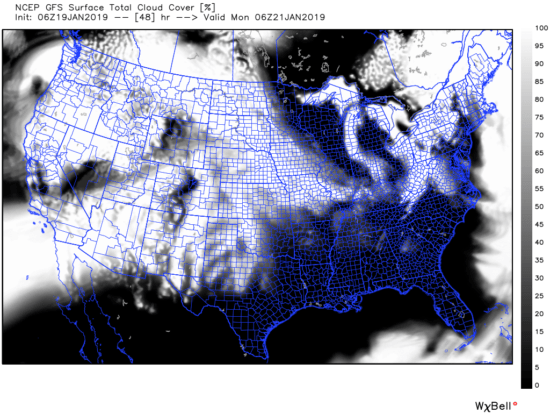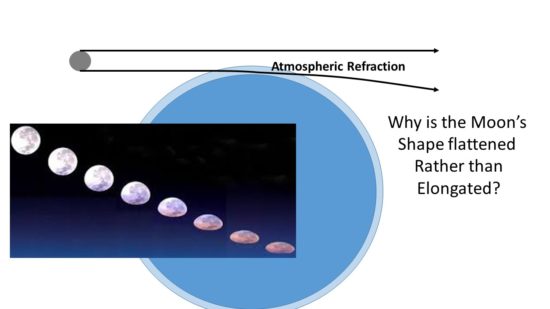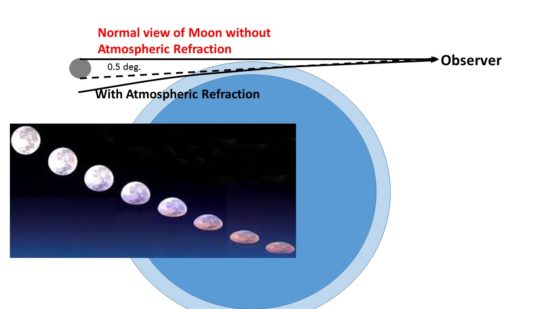Tomorrow night (January 20-21) will present the whole U.S. with a total lunar eclipse, the best one until May 15, 2022.
Totality here in Alabama will occur approximately from 10:40 to 11:40 p.m. CST. Clear weather will be restricted mostly to the southeastern U.S., and portions of the Northern Plains and Great Lakes:

A Mystery (to me, anyway)
There’s one aspect of the eclipse I cannot figure out. I’m sure the explanation will be simple, and when someone explains it to me, my response will be, “DOH!”.
The illumination of the moon during totality is due to light scattered through Earth’s atmosphere. Just as we see red sunsets, that red light will be shining on the moon from an annulus of red sunset light circling the Earth.
What I don’t understand, though, is the role of sunlight refraction (bending of sunlight) as it passes through the atmosphere at an oblique angle. The refraction occurs whether it is the moon or the sun being viewed through the limb, and I will use the example of moonlight shining through the limb.
My understanding is that light (from either the moon or sun) bends as I crudely show in the following cartoon. The “mystery” arises from the fact that we know that the appearance of the moon is that it is flattened due to refraction (this is NOT a diagram of what is happening during the eclipse.. it’s a general question about how either sunlight or moonlight is refracted as it passes close to Earth’s limb):

The moon composite photo is from the ISS, so it is exactly analogous to the situation shown in the drawing.
So, the mystery: Why is the moon flattened rather elongated? I simply don’t know. But I’m sure the explanation is simple.
Update: Mystery Solved
As I suspected, the problem was in the way I was looking at it. As
Brent Auvermann suggests in the comments, here’s the proper way to look at it. The eye sees the top and bottom of the moon at 2 slightly different angles, which are normally separated by 0.5 deg. But when the view in the direction of the bottom of the moon (0.5 deg. below the top of the moon) goes through a lot of atmosphere, it gets refracted downward, and the view from that direction comes from below the moon. In other words, what is a 0.5 degree subtended angle viewed by the eye actually originates from a bigger angle than that on the other side of the Earth’s limb. That causes the bottom of the moon to be compressed into a smaller angle (flattened):


 Home/Blog
Home/Blog



